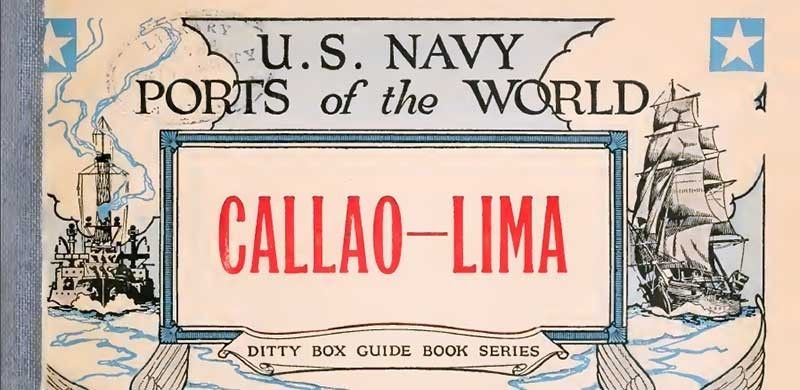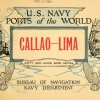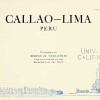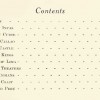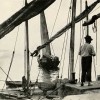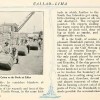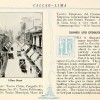This exotic and rare booklet named “US Navy Ports of the World, Callao–Lima” was published 1920 by the Bureau of Navigation–Navy Department as part of the Ditty Box Guide Book Series. The 39 pages contain a very brief history about the Incas, information about the port area of Callao and other sites.
The principal idea of the Ditty Box Guidebook Series was to provide basic information on the destination for US sailors arriving in exotic ports. We have seen booklets for Singapore, Gibraltar, Canton, Hong Kong, among others.
The provided information is all over the place, but still a lovely piece of history and a marvellous example of a predecessor of modern-day travel guides.
Extract of the foreword:
Since warships flying the American flag have made the world of waters their cruising grounds and since they carry with them scores of thousands of seagoing Americans, the interest of the Nation in ports, far and near, has increased in recent years.
In order to furnish valuable information to officers and enlisted men of the Navy, who visit these countries—and to other travelers on official business—the Bureau of Navigation is preparing individual guidebooks on the principal ports in oil quarters of the globe. Although every effort has been made to include accurate information on the most important subjects connected with this port, it is realized that some important facts may have been omitted and that certain details may be inaccurate.
Any information concerning omissions or inaccuracies, addressed to Guidebook Editor, Bureau of Navigation, will be appreciated. The information will be incorporated in revised editions. Grateful acknowledgment is made to the National Geographic Society for its suggestions, both as to editorial policy and the interesting details concerning Callao and Lima and environs. Acknowledgment is also made to Publishers’ Photo Service for the following photographs.
Extract of the introduction:
Peruvian Gold, Incas’ idols, Pizarro the conqueror, Indian slaves, forgotten cities, Spanish galleons, bronzed buccaneers—the warm breath of romance! Of all the South American countries, Peru is probably the most fascinating from the standpoint of history, and one of the unique, even in the prosaic age of the present. Peru has lost much of her ancient splendor. Nearly the last vestige of her olden civilization has disappeared before the onset of a new one; but even now, with its unusual industries, its oriental tinge, its desert coast, traditions, and picturesque characters, Peru is fascinating to the wandering stranger.
The traveler knows that Peru is part of South America; yet he finds that it is not wholly of South America. An explanation can not be given here, for no one knows the reason. The wrinkled hags of the uplands will tell the stranger that the Indians who crept and moaned and died under the Spanish yoke have come back to haunt the land; others will say that the Incas’ ghosts have returned to guard their stores of hidden gold; that their presence is responsible for the feeling of oppression experienced at times by the traveler during his sojourn in Peru. But such superstitious mumblings, such old wives’ tales, can be laughed away as pure inventions, as products of distorted imaginations; but, nevertheless, there is mystery and a ‘’feeling in the air” along the Peruvian coast and in the mountain lands.
...
Peru is a land of contrasts, the most noticeable of which is the coldness of the ocean waves that dash against tropical shores. Other contrasts are the watering of tropical plants by melted snows, deserts and fertile Valleys, and the snow-clad Andes towering over tropical forests. Another contrast along the coast is the lack of moisture, which might render Peru unfit for human habitation were it not for rainfall in the interior. This contrast of cold water and warm shores is caused by a current of cold water—the Humboldt current, which flows along the coast of South America from regions near the Antarctic to the Equator. The absence of moisture on the coast is caused by the expansion of the atmosphere, which makes for dryness. We know that before it can rain a moisture-tilled atmosphere must contract—the “sponge” must be squeezed. The atmosphere along the Peruvian coast expands rather than contracts, under the influence of the cold winds from the Humboldt current blowing on shores warmed by the hot sun. And, resultantly, it does not rain on the coast lands of Peru.


